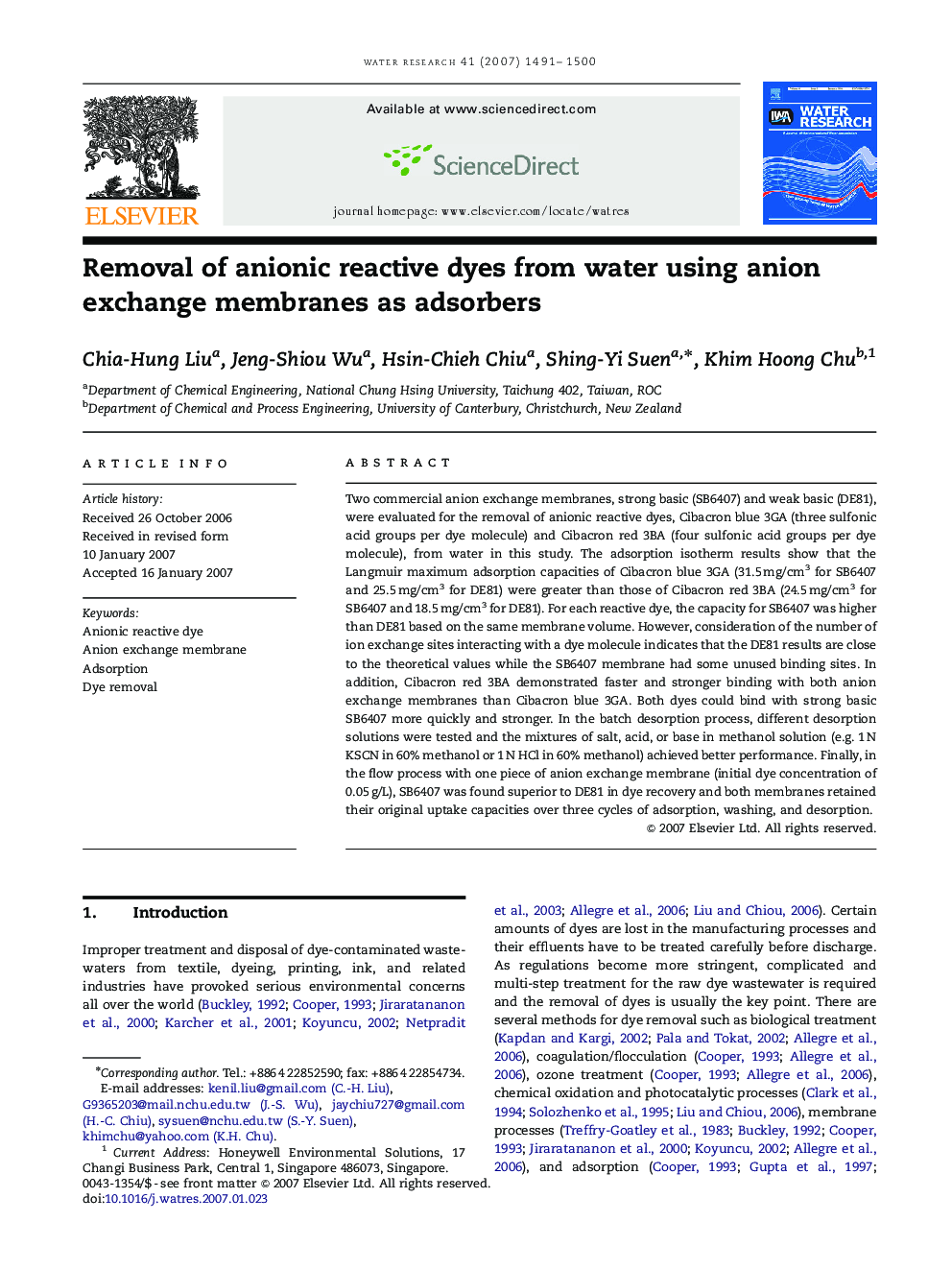| Article ID | Journal | Published Year | Pages | File Type |
|---|---|---|---|---|
| 4486470 | Water Research | 2007 | 10 Pages |
Two commercial anion exchange membranes, strong basic (SB6407) and weak basic (DE81), were evaluated for the removal of anionic reactive dyes, Cibacron blue 3GA (three sulfonic acid groups per dye molecule) and Cibacron red 3BA (four sulfonic acid groups per dye molecule), from water in this study. The adsorption isotherm results show that the Langmuir maximum adsorption capacities of Cibacron blue 3GA (31.5 mg/cm3 for SB6407 and 25.5 mg/cm3 for DE81) were greater than those of Cibacron red 3BA (24.5 mg/cm3 for SB6407 and 18.5 mg/cm3 for DE81). For each reactive dye, the capacity for SB6407 was higher than DE81 based on the same membrane volume. However, consideration of the number of ion exchange sites interacting with a dye molecule indicates that the DE81 results are close to the theoretical values while the SB6407 membrane had some unused binding sites. In addition, Cibacron red 3BA demonstrated faster and stronger binding with both anion exchange membranes than Cibacron blue 3GA. Both dyes could bind with strong basic SB6407 more quickly and stronger. In the batch desorption process, different desorption solutions were tested and the mixtures of salt, acid, or base in methanol solution (e.g. 1 N KSCN in 60% methanol or 1 N HCl in 60% methanol) achieved better performance. Finally, in the flow process with one piece of anion exchange membrane (initial dye concentration of 0.05 g/L), SB6407 was found superior to DE81 in dye recovery and both membranes retained their original uptake capacities over three cycles of adsorption, washing, and desorption.
